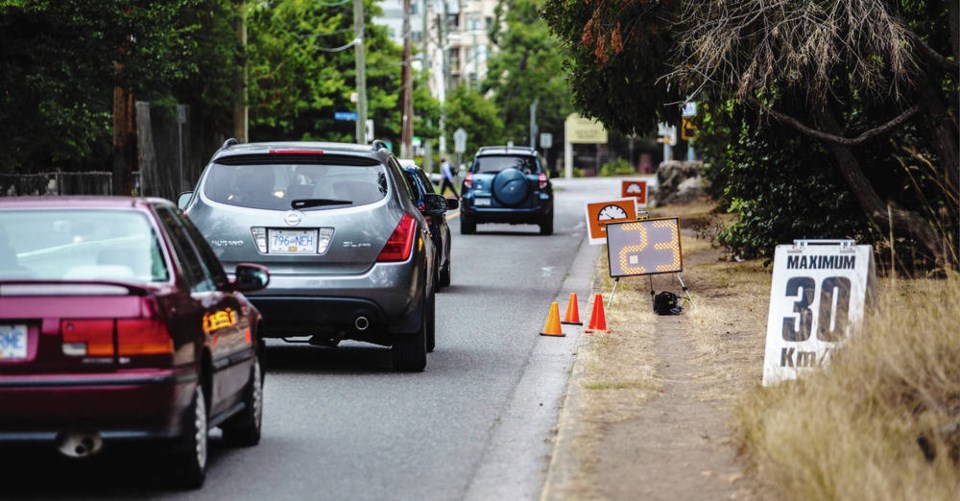After a seven-month reprieve, Greater Victoria students who protested their school’s proposed ban on cellphones in February are experiencing what it means to not have ready access to their personal mobile devices throughout the day.
In early March, Dunsmuir Middle School in Colwood began restricting use of smartphones and tablets by students in classrooms and on school grounds, with the full ban to be enforced by the end of that month.
School administrators had consulted with its parents advisory council and students to develop the policy, which is similar to bans at some other Victoria-area middle schools. Under the new rules, students are to keep their devices in their lockers. Cellphone and tablet use is limited to before and after school, during instructional time for educational purposes as directed by the teacher, for health or medical purposes, or as assistive technology.
The ban also covered lunchtime and breaks, which some students felt was overly restrictive. They protested and collected more than 350 students’ signatures in a petition.
Despite their efforts, the ban’s implementation proceeded.
Then, halfway through March, COVID-19 happened, and schooling changed completely. On March 17, the Ministry of Education suspended in-class instruction for most students in the province. Instead of adjusting to no access to Instagram, SnapChat, messaging, games, and other mobile apps during school hours, most students at Dunsmuir Middle School and other B.C. schools had to adjust to the remote school learning experience.
Their bedrooms at home became their lockers. Dining room tables and kitchen countertops shared with siblings or working-from-home parents became their desks and lab benches. Instruction and classroom interaction with teachers and classmates happened via email and online video meetings.
With many households sharing a single desktop computer for school and work, use of tablets, laptops and even smartphones became essential. The province also loaned out more than 23,000 computers and devices to students across the province, so that they could access the internet and continue their education while in-class learning was suspended.
Unlike many adults who shifted to remote work at the start of the pandemic restriction, kids attending virtual school from home experienced little daily monitoring of their daily productivity or progress.
Many employers who have sent staff home with computers to work remotely during the COVID-19 restrictions are using network apps to monitor employee productivity. But unless a parent had time and was inclined to engage fully with their kids’ at-home academics, nobody was monitoring students’ use of devices to surf the web, watch Netflix, check Instagram accounts, post videos to Snapchat or TikTok, and message their friends throughout the day.
Although it will be some time before the effects of the last three months of the 2019-2020 school year on kids’ academic progress are fully assessed and known, there are likely some outcomes we can take for granted.
For example, kids interested and engaged in their studies were more likely to have continued them in the remote-school milieu.
Those who are conscientious, have reasonable time-management skills, and are good at self-direction and self-motivation likely did better than their counterparts who can’t draw on similar personal traits.
Those whose parents set clear and reasonable expectations at the start of the schooling-at-home experience and held the kids accountable probably did OK, too. Kids with enough self- confidence — and self-worth — to ask teachers and parents for help when they were stuck on a lesson were more likely to get the guidance they needed to solve the problem and continue on.
And those sufficiently self-disciplined to focus on their learning — and to avoid the distractions offered by smartphones and less-structured time — also had an advantage.
Now the new school year is starting, and reality has returned.
It’s a reality that few students anywhere in B.C. could have foreseen in February. Classes this year are smaller. Kids are expected to wear masks when physical distancing isn’t possible. Many will be moving between fewer classrooms and school spaces during the day. The start and end of their classes, breaks and lunch hours might be staggered.
And, on top of those huge changes, after a seven-month reprieve students at Dunsmuir Middle School must navigate another layer to their new school reality. They face having to wean themselves from the security and distraction of having their phones at hand throughout the day.



